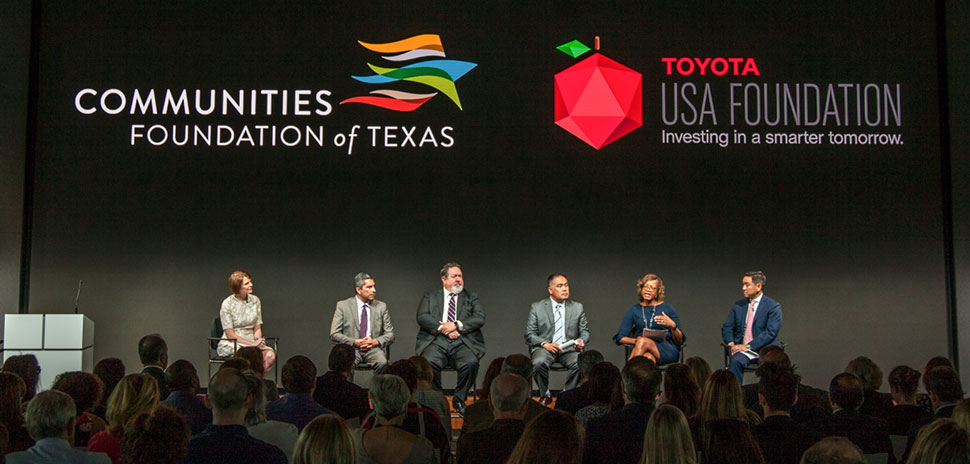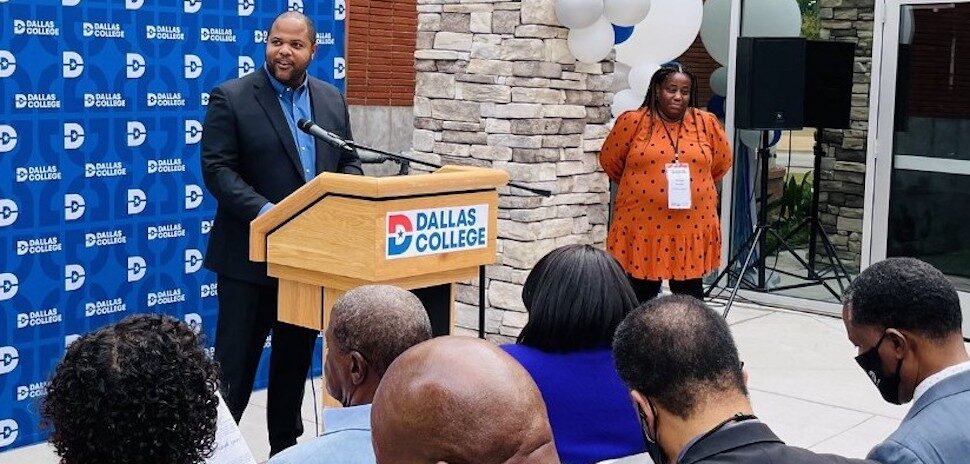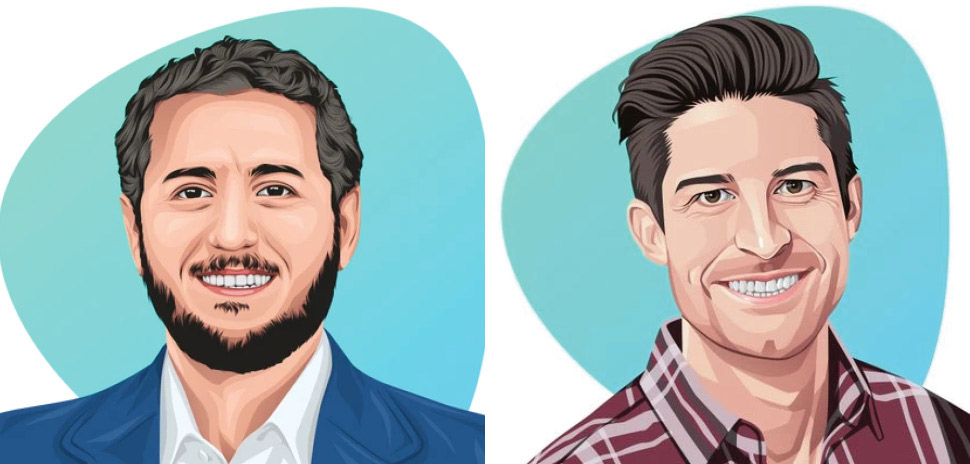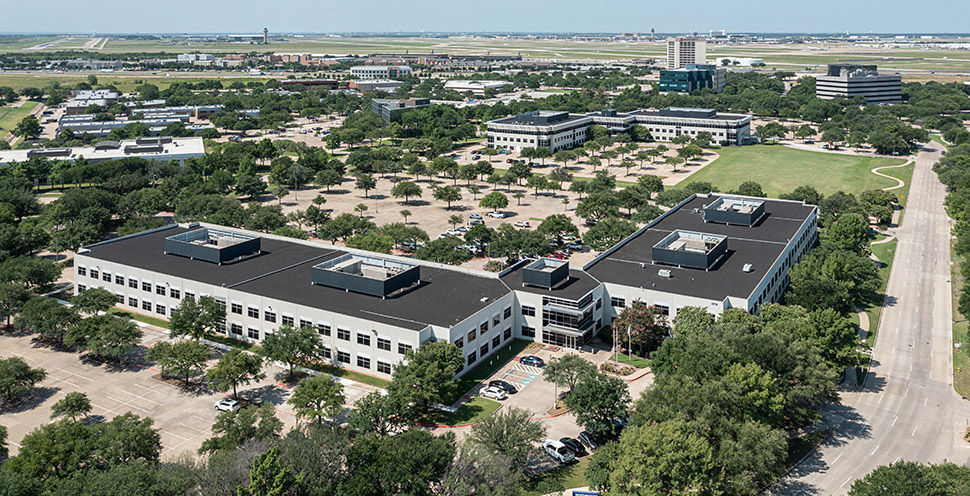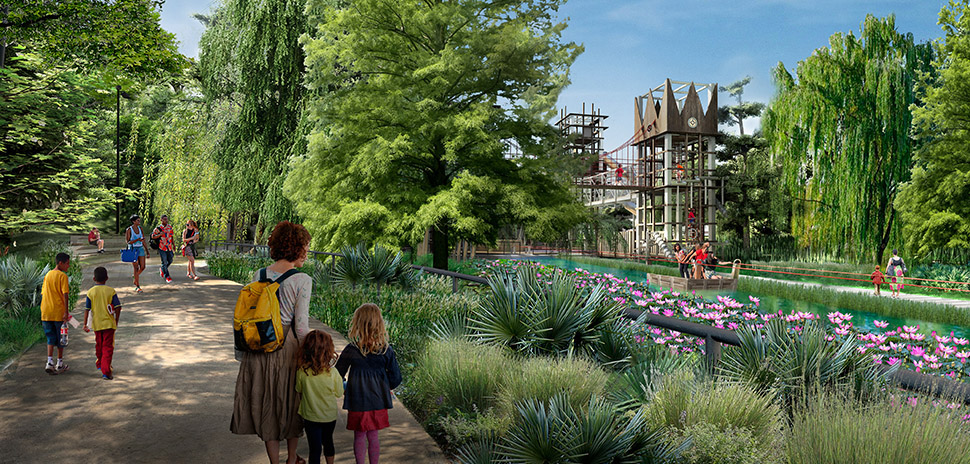Jobs requiring science, technology, engineering, and math skills are on the rise, but in 2018 millions of these positions are expected to go unfilled in the U.S.
It’s an economic dilemma that can be traced back to the types of knowledge and experiences students get in the classroom. Local initiatives and special academies are giving students more exposure to STEM, but community leaders during a panel Tuesday at Toyota Motor North America’s headquarters in Plano said more can be done.
“When we look at the global landscape and we look at the competition that’s out there, STEM is critical to our future success and our prosperity,” said Andres Alcantar, chairman of the Texas Workforce Commission.
“When we look at the global landscape and we look at the competition that’s out there, STEM is critical to our future success and our prosperity.”
Andres Alcantar
Over the past year in Texas alone, 352,000 new STEM-related jobs have been added. He said employers across a variety of fields from advanced manufacturing to health care need talent that has a strong foundation in math and science to stay competitive.
Alcantar and others discussed ways to reorient educational opportunities so that students are better prepared to fill these STEM-related jobs in the panel hosted by Communities Foundation of Texas and the Toyota USA Foundation.
The event featured leaders from education, social, and government sectors including Michael Medalla, manager for the Toyota USA Foundation, Neil Matkin, president of Collin College; Alfreda Norman, senior vice president at the Federal Reserve Bank of Dallas; and George Tang, managing director of Educate Texas. Monica Egert Smith, chief relationship officer for Communities Foundation of Texas, moderated the talk.
Here are some of the ideas those leaders put forth as things to consider when working on solutions to help students step into their careers.
THINK OF STEM AS MORE THAN SCIENCE, TECH, ENGINEERING & MATH SKILLS
By now, most people are probably aware that STEM stands for science, technology, engineering, and math.
George Tang, managing director for Educate Texas, a public-private initiative of Communities Foundation of Texas with a mission of improving public education, says that meaning has evolved. Preparing students for success in their studies and the workforce goes beyond just thinking about those core disciplines.
“Successful In Today’s Evolving Marketplace.”
George Tang
“It’s about how does an individual student work independently and with others to analyze information, synthesize it into a coherent thought, and then be able to distill it down into something that’s meaningful and that they can take action on. Those are the things that make STEM important to the 21st century,” Tang said.
That’s why he suggests rethinking what the acronym stands for and instead consider it to be this: “Successful In Today’s Evolving Marketplace.”
DON’T JUST TEACH, GIVE STUDENTS OPPORTUNITY & INSPIRATION
Michael Medalla, manager of the Toyota USA Foundation, said as the foundation is deciding where to put its social impact dollars, it’s looking beyond the STEM skills gap, too.
There also are gaps in inspiration and opportunity, he said.
“We started doing some thinking on how can we get young people inclined towards STEM, so that we can get them in the STEM funnel and get them to a STEM career because we know that STEM jobs are good jobs,” Medalla said.
At Educate Texas, Tang said it’s been focused on programs that introduce kids to STEM as early as Pre-K.
“Those kinds of programs that convince students they can do it. … I think those are big success stories.”
Neil Matkin
“For kids that are economically disadvantaged that’s not something that they often get exposed to. They don’t understand the importance or the relevance of STEM to both their current path and their future paths,” said Tang, who noted 60 percent of the state’s 5.5 million public K-12 students are economically disadvantaged.
Then, as they reach the middle school years it’s about keeping kids engaged with activities such as robotics and drones (which can offer interactions with professional mentors) and finally, in high school, Tang recommends “deep immersion” experiences that can help students in deciding their future careers.
Academic achievement should be celebrated and bring communities together similar to how success in sports does, Alcantar said.
Neil Matkin, president of Collin College, said some kids are holding on to the notion that STEM is just too hard. Showing students what’s possible is key.
He said the U.S. can look to Germany as a model for its apprenticeship programs which give students opportunities to work with professionals in the field as part of their education.
“Those kinds of programs that convince students they can do it. They get to see people that are doing the work they aspire to. They get to be encouraged. I think those are big success stories,” Matkin said.
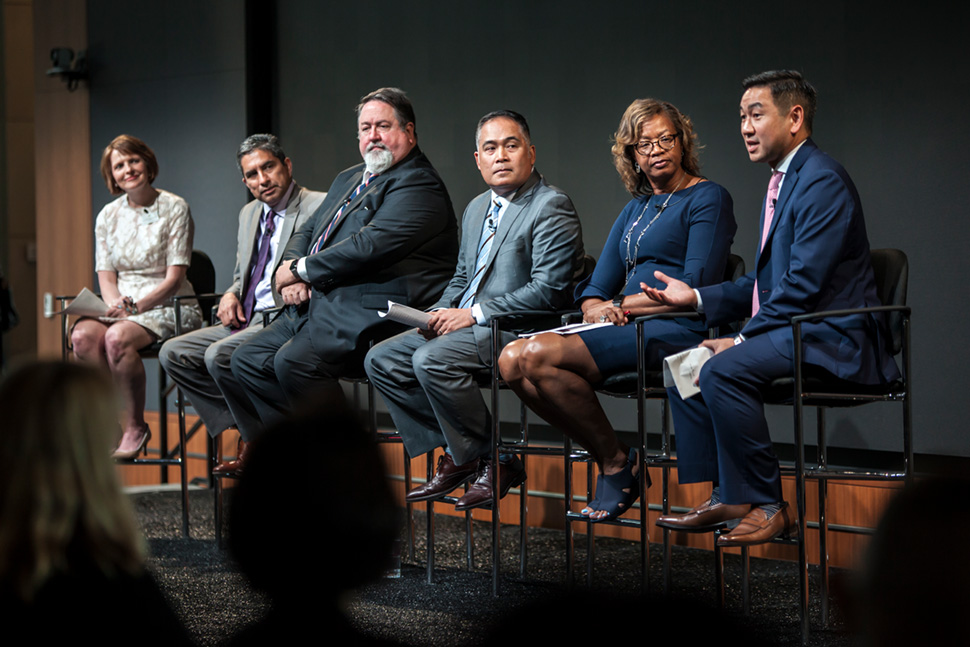
Photo: Kim Leeson
REALIZE THERE’S NO ONE PATH TO CAREER SUCCESS
The general consensus has told students for years that going to college was the only way to thrive, and that’s just not the case, Matkin said.
For some students, a few years in community college or a technical program could be what they need to secure a good-paying job.
Educators should be introducing students to the variety of career pathways.
“We got to build a pipeline that helps students understand where they can get to from where they are,” Matkin said.
That could be a two-year post-secondary program that gives students the credentials to get a job. While working and getting experience in the field, they could later decide to up their training with a four-year degree.
In 2020, Collin College is planning to open a nearly $150 million Technical Campus in Allen. It gives students another post-secondary option and will train them to fill area industry needs in robotics, IT, manufacturing, and more.
UNDERSTANDING COMMUNITY COLLABORATION IS KEY
Leaders agreed the old saying “it takes a village,” could apply to preparing students for the workforce, too.
“There’s no silver bullet for the entire country. Each community has to determine how they’re going to work together as partners — public, private, third sector — and there’s things for everyone to do,” said Alfreda Norman, senior vice president at the Federal Reserve Bank of Dallas.
She said after the Great Recession, Federal Reserve banks throughout the country started taking a holistic look at workforce and community development.
“You can’t even build a community unless people have good jobs,” she said.
“There’s no silver bullet for the entire country. Each community has to determine how they’re going to work together as partners …”
Alfreda Norman
Examples across the nation show local educators, businesses, and governments working together to find solutions.
In North Texas, she points toward the new Dallas County Promise program, an initiative spearheaded by the Dallas County Community College District and nonprofit Commit that gives area high school graduates free college tuition.
Collin College has been working with its area high schools as well to build career pathways, Matkin said.
Toyota provides project-based learning programs in 12 North Texas schools and is planning to award $220,000 in grants in partnership with national nonprofit Project Lead the Way, according to Al Smith, Toyota’s group vice president for social innovation.
“Along with these grants, we’ll be rolling out K-12 programs that will help create new problem solvers of tomorrow and teacher education programs that will help develop the curriculum to support STEM learning,” Smith said.
Medalla said Toyota takes the “360 degree approach” to philanthropy. That means addressing issues such as transportation, child care, and access to affordable housing and health care that have been found to hinder students’ academic success in the classroom.
“We want to think about philanthropy of existing in an ecosystem,” Medalla said.
The foundation of Educate Texas is built on collaboration. It partnered with the Texas Instruments Foundation to implement a districtwide STEM curriculum in Lancaster ISD.
“Over the course of the last six years, we ended up having some really great gains in terms of the quality of the teaching, the strength of the leadership, [and] the engagement of the community as a whole,” Tang said.
Student performance also has been impacted with eighth-grade math and science scores now above the state average.
Now, it’s applying the model elsewhere.
In May, the TI Foundation announced it would invest $4.6 million over the next three years to allow Educate Texas to help transform STEM curriculum in the Richardson ISD.
Norman said the Federal Reserve can do its part by highlighting programs that work, which could help policymakers in their decisions on where to invest dollars.
“The good news is that it’s not that we don’t have resources … we just have to make it a priority and we have to be hopeful about it,” Norman said.
READ NEXT
![]()
Get on the list.
Dallas Innovates, every day.
Sign up to keep your eye on what’s new and next in Dallas-Fort Worth, every day.










